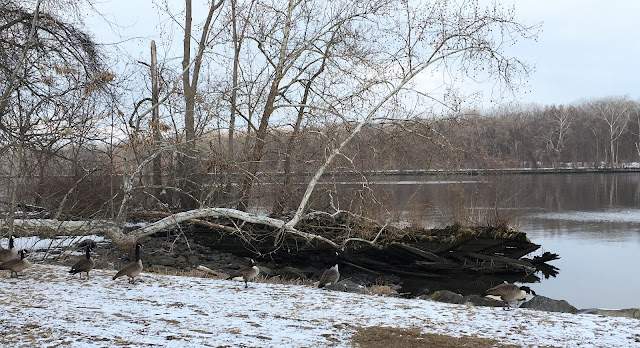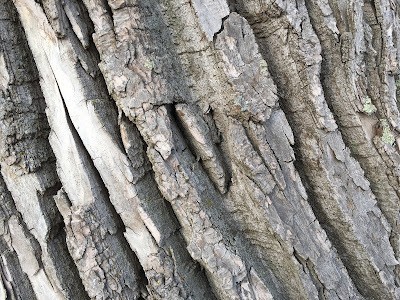Sunday afternoon, about 3:45, partly cloudy, 40°, low tide
The slanted afternoon sun came in and out of the clouds as I walked along the river enjoying the crunch of the light snow underfoot and the towering cotton woods above. What massive trees. With the erosion along the shoreline, a couple are just about ready to fall into the water.
About the pictures - of which I would have taken more if my phone was not on 1% - top to bottom.
Behind the Canada geese you can see the hulk of an old barge. At low tide, if you dare to approach more closely by clambering over the fallen beech tree, you can still see the iron cleats where ropes were tied off and also the heavy decking boards. Slowly, after 100 years or more of being stuck there, it is rotting away.
Through the brambles in the foreground of the next picture you can glimpse one of the interesting pieces of industrial remains that are by the water. This metal object might have been part of the ice warehouse or dock that used to be here. The Hudson has been a working river for a very long time. The channel and shorelines have been changed significantly over the years since Henry Hudson came along in 1609.
In the next photo, in the distance is Barrent Winne's house. Hard to believe there used to be a busy wharf here complete with warehouses, general store and ice house.
Next is the deeply creased bark of a cotton wood tree.
After that is a piece of farming equipment near the side of the road on the way into the park. Its wheels and tines blend in with the wild brambles. J. B. Lyon used to have a large estate here, his big mansion burned down in the 1960s. Farming did happen here, and Lyon also had apple orchards. The next picture shows one of the lions that guard the entrance to the carriage roads that wind thru the estate.
Lastly is the sign at the top of the hill going down into the park.
I wish I had had the battery power to take some snapshots of the waterfall on the Vlomankill and the wonderful mansard roof of the Best house.


















